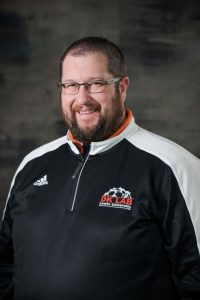 To compete globally in key energy sectors through the 21st century and beyond, the U.S. must accelerate the discovery and development of novel materials. The I05 symposium at the 236th ECS Meeting, “Accelerated Discovery and Development of Energy Materials,” is a unique opportunity for researchers and stakeholders from electrochemistry and materials research to meet, network, and initiate new collaborations in highly impactful research and development. The electrochemical research community focuses on important energy applications such as generation, storage, distribution, and utilization. The materials research community focuses on computational and experimental methodologies for accelerated materials discovery and development, and advancing multiple sectors. While rapid scientific advances are occurring independently in both fields, bringing world leaders from the two fields together is an extraordinary opportunity to achieve materials breakthroughs with the potential to revolutionize the U.S. energy sectors. (more…)
To compete globally in key energy sectors through the 21st century and beyond, the U.S. must accelerate the discovery and development of novel materials. The I05 symposium at the 236th ECS Meeting, “Accelerated Discovery and Development of Energy Materials,” is a unique opportunity for researchers and stakeholders from electrochemistry and materials research to meet, network, and initiate new collaborations in highly impactful research and development. The electrochemical research community focuses on important energy applications such as generation, storage, distribution, and utilization. The materials research community focuses on computational and experimental methodologies for accelerated materials discovery and development, and advancing multiple sectors. While rapid scientific advances are occurring independently in both fields, bringing world leaders from the two fields together is an extraordinary opportunity to achieve materials breakthroughs with the potential to revolutionize the U.S. energy sectors. (more…)
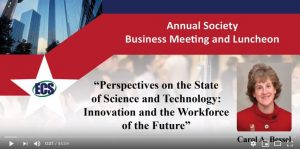 As ECS celebrates the 40-year-anniversary of its first female president, Joan Berkowitz, it is important to note that ECS has a tradition of showcasing women in the sciences at its meetings. Carol A. Bessel, acting division director at the National Science Foundation (NSF), was the highlighted speaker at the annual business meeting at the 235th ECS Meeting. Valerie Browning, director of the Defense Advances Research Projects Agency (DARPA)’s Defense Sciences Office (DSO), will deliver the ECS Lecture at the plenary session of the 236th ECS Meeting. If including, recognizing, and hearing women is critical to attracting and retaining talented women in the sciences, then Bessel and Browning are shining examples of women leading the way. (more…)
As ECS celebrates the 40-year-anniversary of its first female president, Joan Berkowitz, it is important to note that ECS has a tradition of showcasing women in the sciences at its meetings. Carol A. Bessel, acting division director at the National Science Foundation (NSF), was the highlighted speaker at the annual business meeting at the 235th ECS Meeting. Valerie Browning, director of the Defense Advances Research Projects Agency (DARPA)’s Defense Sciences Office (DSO), will deliver the ECS Lecture at the plenary session of the 236th ECS Meeting. If including, recognizing, and hearing women is critical to attracting and retaining talented women in the sciences, then Bessel and Browning are shining examples of women leading the way. (more…)
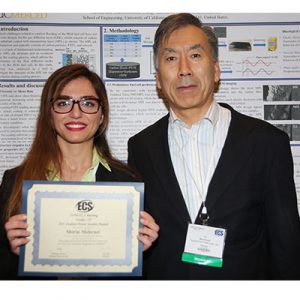 Show off your work at the 237th ECS Meeting with IMCS 2020. Students and early career professionals can present their research at special symposia.
Show off your work at the 237th ECS Meeting with IMCS 2020. Students and early career professionals can present their research at special symposia.
A04 Student Battery Slam 4: Students present ten-minute flash oral presentations on their battery technology work. Awards are given for the three best talks.
Z01 ECS General Student Poster Session: Students deliver oral or poster-form presentations on their research results in electrochemical and solid-state science and technology. A competition for the best posters and papers is part of the session.
The meeting is in Montréal, Canada from May 10-15, 2020. The deadline to submit abstracts is November 15, 2019.
According to the Federal Aviation Administration, nearly 7,000 laser strikes on aircrafts were reported in 2017.
“In cities like Chicago this problem is real as people are shining laser pointers on aircrafts during critical phases of flight, which is a big nuisance to pilots,” said Jason Keleher, a professor and chair of chemistry at Lewis University, who was approached by the aviation department at Lewis University to collaborate on a solution to this growing problem .
“Is it a bunch of kids? Is it accidental? Is somebody just like, ‘I bet you can’t hit that plane with those lasers.’ It’s really hard to identify who’s actually doing it. It’s a very interesting problem,” said Keleher, one he, the project’s principal investigator, was prepared to solve.
Keleher explains that although the lasers don’t cause permanent eye damage to pilots as they maneuver the aircraft, it does cause temporary flash blindness which may make it difficult for pilots to see control systems as they prepare for take-off and landing. He explains it is similar to the way high beams can disorient a driver upon direct exposure.
(more…)
 According to the Georgia Institute of Technology, crab shells and trees may soon replace the flexible plastic packaging used to keep food fresh. The innovative process involves spraying multiple layers of chitin from crab shells and cellulose from trees to form a flexible film similar to plastic packaging film. Once fully dried, the material is flexible, strong, transparent, and compostable.
According to the Georgia Institute of Technology, crab shells and trees may soon replace the flexible plastic packaging used to keep food fresh. The innovative process involves spraying multiple layers of chitin from crab shells and cellulose from trees to form a flexible film similar to plastic packaging film. Once fully dried, the material is flexible, strong, transparent, and compostable.
Not only will these lifeforms become a source of sustainable and renewable wrapping, but they will also help improve food quality. Compared to conventional plastic packaging, the new technology offers a 67 percent reduction in oxygen permeability, allowing food to stay fresh even longer.
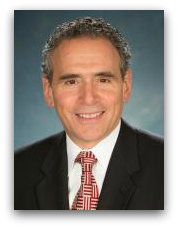
Gerald Frankel, a technical editor of the Journal of The Electrochemical Society, corrosion expert, and open access advocate.
The aftereffects of the Flint water crisis is still felt strongly four years later. Just this year, dozens of Flint, Michigan, residents were outraged by the state’s decision to end a free bottled water program. A program that came into effect after it was discovered the water in Flint was unsafe for consumption.
The catastrophe came to fruition when measures were taken by elected officials to cut costs. The result of which led to tainted drinking water that contained lead and other toxins.
Gerald Frankel, a professor of materials science and engineering at The Ohio State University, touched on the matter in an ECS Podcast interview.
“It was avoidable,” says Frankel, who explained that because water is corrosive, drinking water is treated to reduce the corrosive effects on the pipes that carry it. However, due to financial issues the town of Flint was facing, their source of the water changed from Lake Michigan to the Flint River. “And they decided not to do this chemical treatment.”
 Why do synthetic 2D materials often perform orders of magnitude worse than predicted? A new understanding of this scenario could improve the materials’ performance in future electronics, photonics, and memory storage.
Why do synthetic 2D materials often perform orders of magnitude worse than predicted? A new understanding of this scenario could improve the materials’ performance in future electronics, photonics, and memory storage.
2D materials are films only an atom or two thick. Researchers make 2D materials by the exfoliation method—peeling a slice of material off a larger bulk material—or by condensing a gas precursor onto a substrate. The former method provides higher-quality materials, but is not useful for making devices. The second method is well established in industrial applications, but yields low performance 2D films.
The researchers demonstrated, for the first time, why the quality of 2D materials grown by the chemical vapor deposition method have poor performance compared to their theoretical predictions. They report their results in Scientific Reports.
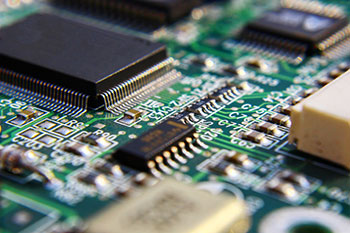 A new process for growing wafer-scale 2D crystals could enable future super-thin electronics.
A new process for growing wafer-scale 2D crystals could enable future super-thin electronics.
Since the discovery of the remarkable properties of graphene, scientists have increasingly focused research on the many other two-dimensional materials possible, both those found in nature and those concocted in the lab.
Growing high-quality, crystalline 2D materials at scale, however, has proven a significant challenge.
Researchers led by Joan Redwing, director of the National Science Foundation-sponsored Two-Dimensional Crystal Consortium—Materials Innovation Platform, and professor of materials science and engineering and electrical engineering at Penn State, developed a multistep process to make single crystal, atomically thin films of tungsten diselenide across large-area sapphire substrates.
With a Twist, Rubbery Material Goes from Flexible to Stiff
Posted on February 19, 2018 by Amanda Staller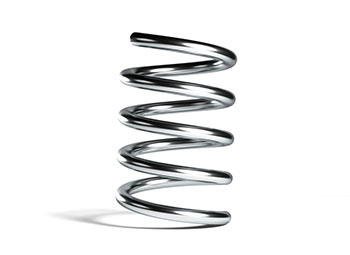 Stress a muscle and it gets stronger. Mechanically stress a new rubbery material—say with a twist or a bend—and it automatically stiffens by up to 300 percent, the engineers say.
Stress a muscle and it gets stronger. Mechanically stress a new rubbery material—say with a twist or a bend—and it automatically stiffens by up to 300 percent, the engineers say.
In lab tests, mechanical stresses transformed a flexible strip of the material into a hard composite that can support 50 times its own weight.
This new composite material doesn’t need outside energy sources such as heat, light, or electricity to change its properties. And it could be used in a variety of ways, including applications in medicine and industry.
The researchers found a simple, low-cost way to produce particles of undercooled metal—that’s metal that remains liquid even below its melting temperature. Researchers created the tiny particles (they’re just 1 to 20 millionths of a meter across) by exposing droplets of melted metal to oxygen, creating an oxidation layer that coats the droplets and stops the liquid metal from turning solid. They also found ways to mix the liquid-metal particles with a rubbery elastomer material without breaking the particles.
 Raymond J. Gorte, Yang Shao-Horn, and M. Stanley Whittingham, all of whom are ECS fellows, were recently elected to the National Academy of Engineering. Election to the NAE is one of the most prestigious professional distinctions bestowed upon engineers.
Raymond J. Gorte, Yang Shao-Horn, and M. Stanley Whittingham, all of whom are ECS fellows, were recently elected to the National Academy of Engineering. Election to the NAE is one of the most prestigious professional distinctions bestowed upon engineers.
According to the NAE, academy membership honors individuals who have made outstanding contributions to “engineering research, practice, or education, including, where appropriate, significant contributions to the engineering literature” and to “the pioneering of new and developing fields of technology, making major advancements in traditional fields of engineering, or developing/implementing innovative approaches to engineering education.”


